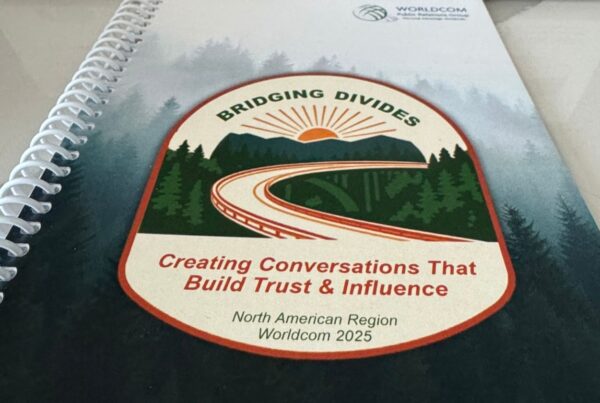By The Pollack Group
Traditionally, digital marketing focuses on organic and paid media strategies. In today’s world, however, this practice is changing. For a business in the twenty-first century to reach its objectives, it is essential to create a sticky and long-lasting experience.
User Experience (UX) describes engineering the experience a user has using a particular product. When you delve into UX Design, you begin to tinker with the art of designing products to provide the most optimal user experience. This process encompasses an understanding of psychology, interaction design, user research, and many more discipline. Above all, it stresses the importance of following an iterative problem-solving process. The three components of a product user experience design are: look, feel, and usability.
Instilling trust and credibility in a user can be instantaneous. Whoever said, “you can’t judge a book by its cover,” was not referring to the internet and technologically savvy users of the twenty-first century. Users today are bombarded with information and technology, that they rely on their instinctive biases to make initial judgments. This is why the UX design approach stresses the importance of creating harmony between a product’s visuals and a user’s values. Not only is it essential to have an impeccable design, but another necessity is also that it has an appropriate look.
READ MORE: What Is A Converting Landing Page?
The feel of a product directly impacts a user’s experience. By studying the interactions between the user and a product, user experience designers can account for the user’s reactions at all stages of using the product. This is an essential step in assuring the user is pleased and has an enjoyable time interacting with the product.
The most crucial stage in product development is testing its usability. This is crucial to avoid upsetting or angering the user. If a product is unusable, there is nothing that can salvage it, not even good looks. User experience design emphasizes that products should be personalized to a user’s needs while delivering functionality comprehensibly.
These elements all impact a brand’s ability to create a loyal following. They have an impact on the user and their purchase decision.
For example, let’s take a look at the PC Revolution of the 1980s and the Web Revolution of the 1990s and 2000s when companies were under pressure to improve their interaction design quality. Before the 1980s, the computer industry had little incentive to produce high-quality user interfaces. This was because the computer users were not the ones making the purchase decisions. When personal computers became popular, the user experience directly impacted purchase decisions. Once the general population gained access to PCs and their software and the internet, the sequence of payment and user experience had to shift accordingly.
LEARN MORE: LAB186 Digital Marketing and Content Production Studio
The process of User Experience Design is constant. It spans all stages of a product lifecycle, from research through to post-launch maintenance and everything in between. This is why marketers must be involved. Marketers involved in the UX Design Process can boost engagement and maximize conversion. This can be done through research by creating customer personas, journey maps, and acquiring feedback with user testing. The user-centered design process encourages practitioners to step back and see different perspectives for a particular product. This allows them to comprehend the big picture fully.
Markets and UX designers share a common goal: to deliver a successful product. To do so, they must work together to complement one another. Marketers and UXers alike share similar benchmarks of success. Each looks to new user acquisition, user engagement, and conversion. To achieve success, they must utilize the other’s skills.
Marketing focuses on making a lasting brand impression, whereas UX focuses on delivering glitch-free performances and flawless experiences. These components go hand in hand to deliver something memorable for a user, ultimately leaving a positive impact on the brand. While UX designers aim to deliver the appropriate experience for a particular target audience, marketers aim to discover who they are and what they are looking for. With marketers’ market research, UX designers have the necessary knowledge they need to attract new users.
To enhance business conversions, UX designers can aid marketers in their efforts to persuade users to buy products by pushing users towards certain actions through page layouts (web) and design elements. These devices can lead to more sales conversion overall.
Marketers hold the role of bringing users to a product. They create awareness, while the UX designer makes them want to stay. This can be achieved with an appealing user interface that impresses the user with exceptional ease of use. The UX designer must optimize readability and usability. To achieve success in content marketing, you must have a balance between marketing and UX design.
The importance of user experience design stretches far beyond the internet and our computer devices. It extends into almost every facet of our society. Each industry can benefit from the UX Design Process. It plays a role in so many disciplines, including Motion Design, Communication Design, Computer Science, Architecture, Industrial Design, Human Factors & Ergonomics, and so much more.
Take a door, for example. You probably would not think much about how doors were designed, at least not until you had to interact with a poorly designed one. Think back to the last time you were in a public restroom. You most likely were obsessing over the disconcertingly wide gap in the bathroom stall doors. Or when you encountered a door with a handle. Your first instinct is to pull, even as the bold PUSH words tell you to do the opposite.
Not only can user experience design resolve many of the issues we encounter today, but it is also a great tool to reimagine how we use a product. Great design can make the best products. What is essential is remembering who you are designing for and how you can improve their experience.
READ MORE: Five Ways PR Can Grow Your Business
This can be seen in Tramontina’s The Bible of Barbecue. The cookware and accessories manufacturer reimagine how BBQ aficionados and aspiring chefs learn the basics of barbecue. They created a book that includes all the necessary components and raw materials for grilling, right in the pages! The first page made of charcoal is designed to be smashed into pieces for the basis of the fire. It goes on from there, including pages that turn into a fire starter, fan, apron, aluminum, knife sharpener, salt, and kitchen cloth and placemat. The cover even doubles as a chopping board.
This shows how user-centered design truly impacts users and their interaction with the products you are promoting.
Whether you are working on a website or application, retail, or household goods, deliberately mapping out how each element of your product works and the overall experience they provide is critical to providing an effortless user experience.






